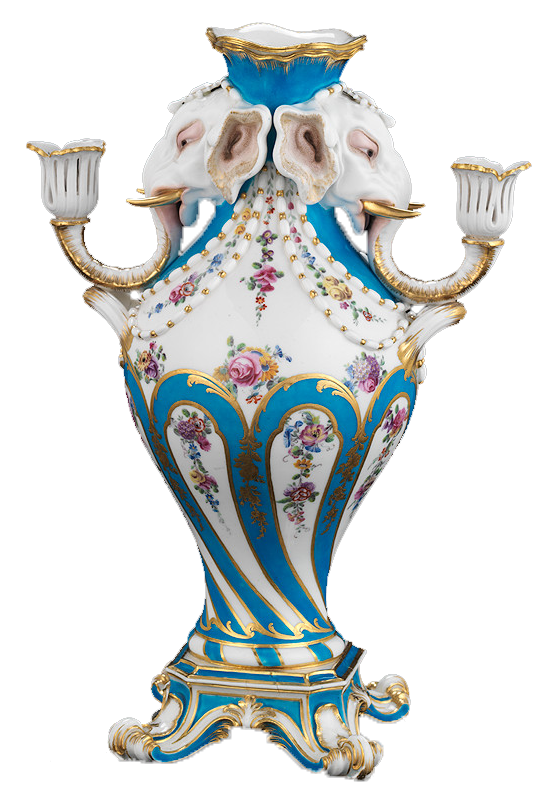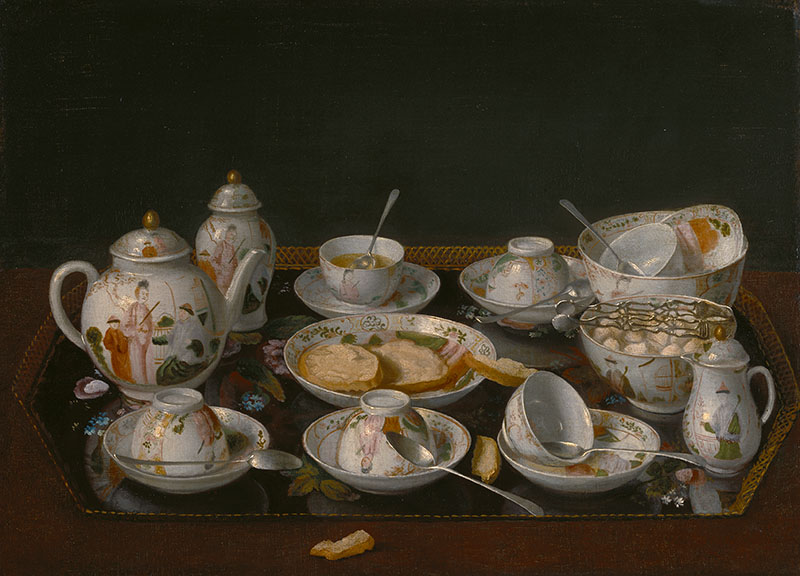Porcelain was the most competitive new European medium of the eighteenth-century. Imported porcelain from Japan and China became immensely popular throughout Europe during the seventeenth-century. In order to provide domestically produced alternatives, European nations raced to discover the secret of porcelain manufacture. In France, the Sèvres porcelain factory began to produce porcelain in 1740 at the Chateau de Vincennes, then moved to its permanent and current home west of Paris. Sèvres porcelain pushed the limits of the medium, expanding the forms of porcelain beyond that of traditional silver services. The innovation at Sèvres caught the attention of Louis XV and his mistress, Madame de Pompadour, who gave the factory a royal charter and presented the porcelain as gifts to monarchs and foreign dignitaries. Royal patronage allowed the factory to hire the best and most innovative artisans and technicians, and contributed greatly to its continued success.

Elephant-head vase, Sèvres Manufactury, ca. 1758-62
Metropolitan Museum Accession Number 1976.155.61

One of the more innovative and rarest porcelain designs to come out of the Sévres factory was the Elephant-Head vase pictured here. Multiple firings provided ample opportunity for accidents in the kiln, and the limited four-year long production of this costly design means there are very few surviving examples. The trunks of the elephants were designed to function as candleholders, allowing the vase and gilded details to shine even after dark. While the color of the vase may seem bright to a contemporary audience, it was one of many new colors invented by chemists at the Sévres factory, and was in high fashion. The availability of new pigments, like indigo, from far away showed the mercantile strength of France, and further added to the luxurious allure of porcelain.


